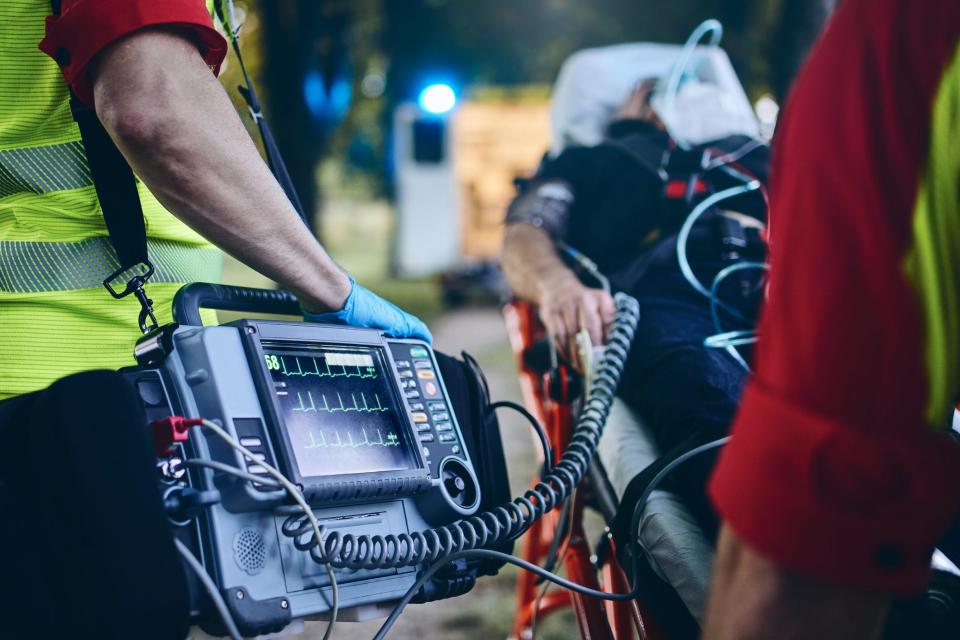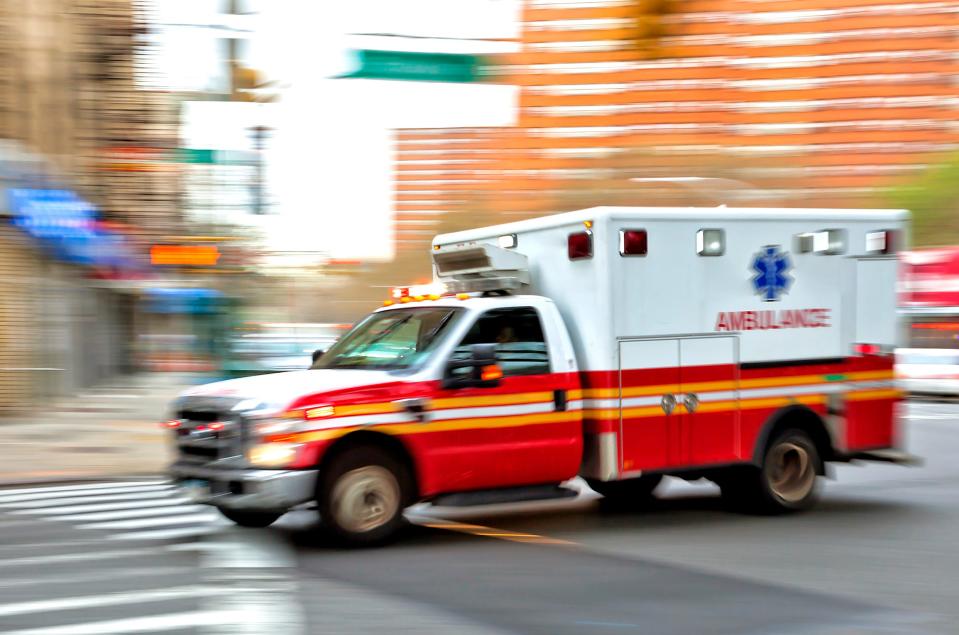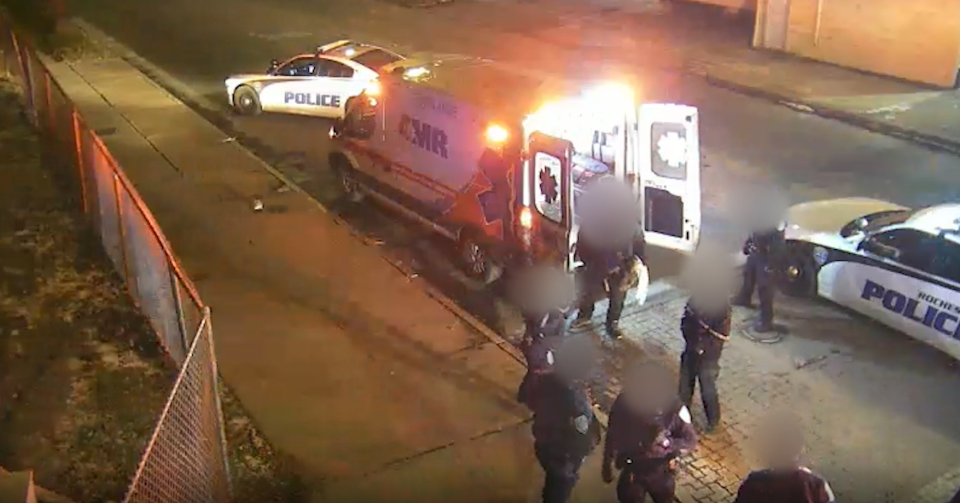Ambulance rules in NY: What should Rochester EMT, police do with agitated patients?
Why didn't Rochester police get inside the ambulance and help EMTs transport an allegedly agitated patient to the hospital?
That is a key question for investigators looking into ambulance and police responses to a medical crisis on Nov. 30 on Seneca Avenue and Norton Street in Rochester, according to an EMS expert and state regulations.
The incident began when EMTs called police to report that an unidentified man, who said he was struggling to breathe, had allegedly assaulted an EMT inside the vehicle. Police arrived and asked the man to exit the ambulance to wait for another ambulance to arrive and get him to the hospital.
While waiting on the sidewalk, the man fell to the ground, laying face down for more than two minutes before police and EMTs began helping him.
He died about two weeks later — of undisclosed causes — and Rochester Mayor Malik Evans on Thursday held a media briefing to announce investigations into the incident.

What should EMT, police do with agitated patients
State regulations direct EMTs to call police when dealing with an agitated or violent patient, which happened in this case.
EMTs also should receive training on verbally de-escalating aggressive patients, state records show, and EMTs are allowed to apply medical restraints, if needed, while awaiting police response.

"If the patient is in police custody and/or has handcuffs on, a police officer should accompany the patient in the ambulance to the hospital," state Emergency Medical Services regulations note.
State law also requires EMTs to transport patients to the hospital, unless the ambulance breaks down or the EMTs get sick, suffer an injury or otherwise become incapable of completing the job, said Geo Henderson, an EMS expert with more than 30 years working as a paramedic in upstate New York.
"Why this ambulance refused to transport and was waiting for another one, I don't understand," Henderson added.
Rochester ambulance incident Rochester man forced out of ambulance, left on sidewalk; investigation underway
What we know about Rochester ambulance incident
An EMT described to police what happened when the ambulance crew began treating the unidentified man inside the ambulance, police bodycam footage shows.
“You told us you had pain from drinking water and you came in and you jumped at me and demanded oxygen and you would not let go of me," the EMT said.
The man then gave his perspective to police: "I was freaking out. You’d freak out, too, if you can’t breathe,” he said.
"I tried to grab for the door and try to get out of here and try to breathe," he added. The man then asked police for a ride to the hospital, which an officer refused.

Police are generally discouraged from transporting medical emergency patients to the hospital in police vehicles, Henderson said, noting some circumstances may allow for police to act in absence of an ambulance.
After the cop refused, the man then stepped down out of the ambulance and walked to the sidewalk, where he sat down briefly before falling face-first onto the ground. For two minutes, the video shows multiple emergency or police staffers standing in frame who appear to not be checking on the man.
After two minutes, a police officer shined a flashlight near the man's head and asked if there was blood on the ground, triggering a response from nearby EMT.
One of the critical questions about the incident involved the fact police did not appear to arrest or handcuff the man, which state regulations indicate triggers the need for an officer to accompany an agitated patient in the ambulance on the way to the hospital.
But Henderson noted police have ridden along in his ambulance numerous times to help with agitated patients without handcuffing or arresting the person.
The state Department of Health, which oversees ambulances, declined to comment Friday on the matter, citing the ongoing investigation.
How many EMTs injured, assaulted
Violence caused the second-highest number of injuries to EMS workers nationally, accounting for 3,000 injuries in 2020, the most recent federal records show. The top injury causes were linked to overexertion and bodily reactions.
Overall, EMS workers suffered 16,900 injuries that were treated at emergency rooms across the nation in 2020, which was down from the roughly 20,000 injuries per year average since 2015, the data show. But some EMS and health groups have called for improved protections for workers, citing increases in violence against EMTs during the pandemic.
Henderson struggled to describe his violent encounters inside ambulances.
"I couldn't tell you how many times I've been spit at, shoved, pushed, threatened — you name it," he said. "There is a push for protecting us, and certainly with how society has devolved people are more aggressive towards everyone."
This article originally appeared on Rockland/Westchester Journal News: Rochester man forced from ambulance. Why didn't police ride along?

